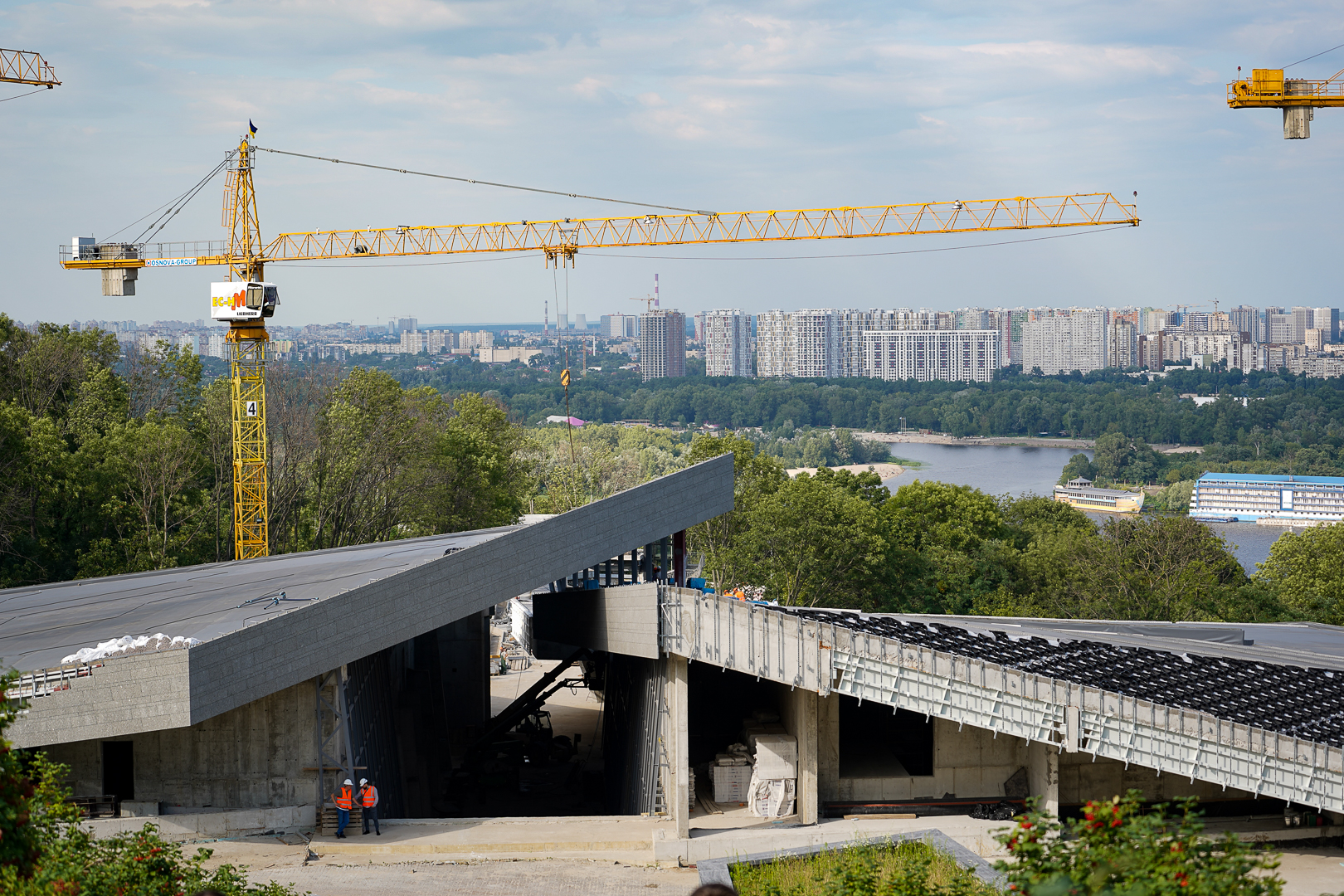Journalists visited the construction of the second phase of the Holodomor Museum
On Monday, July 24, representatives of the leading Ukrainian mass media, at the invitation of the Ministry of Culture and Information Policy, visited the construction of the second phase of the Holodomor Museum, the completion of which has been the subject of recent disputes. Journalists had the opportunity to inspect the readiness and scale of construction and receive comments from the Museum representatives and the general contractor regarding the necessity to complete the construction of this iconic museum object.
“I want to remind all Ukrainian citizens that we currently do not have a Holodomor Museum,” said the Acting Director General of the Holodomor Museum, Lesia Hasydzhak. — Because what works today as a legal entity is the first stage of a large memorial complex in memory of the Holodomor victims, the construction of which was foreseen in 2006 by the adoption of the Law of Ukraine on the Holodomor genocide. In 2009, the first stage of the memorial complex, which became the Hall of Memory, was opened. To date, it has already been visited by millions of Ukrainians and foreign guests. However, this is only the first step. That is, today, we work on only 450 square meters, having neither the main exposition, the exhibition space, nor a professional stock repository to preserve our stock collection, which is the basis of any museum. And when in 2017 the state of Ukraine returned to the completion of the construction of the memorial complex, we, the museum workers, welcomed this step, as we finally got a chance to have a complete museum complex.”
According to Lesia Hasydzhak, the total area of the building of the second phase is 15 thousand square meters. It will contain not only exhibition halls but also a storage facility equipped according to all requirements, a hall for temporary exhibitions, a conference hall, and a cinema hall. “Because a museum today is not just a place where history and some artefacts are stored. It is the centre of community life, where people can exchange ideas and have discussions, says the head of the Museum. “Accordingly, here we plan to host international forums, symposia, conferences, and arrange presentations.”
Construction progressed not without problems, as it stopped several times due to the coronavirus pandemic and the large-scale Russian invasion.
To date, as the representative of the general contractor Ivan Sydorenko reported, 68% of all external construction works have been completed. If the funding does not stop, then by December 31 of this year, the builders must complete the exterior work.
“According to the plans for the completion of the second phase, our main goal is to finish all external works, establish all communications, complete landscaping, so that by the winter period the circuit will be closed and all communications will be connected, and it will be possible to perform work inside the premises,” added Sydorenko.
According to him, it would be a foolish decision to stop work just now. “Since we have about 10-15 percent of the work left to complete the works on the contour of the building. It is necessary to equip the roof, close the facade – then the building, at least, will be closed. Because at the moment, water gets into the building through unclosed holes during showers, which we constantly have to pump out,” added Ivan Sydorenko.
Completing the Museum premises is important not only from a technological point of view. This is a symbolic object that is of great importance for the formation of national memory, honouring the victims of the communist regime crimes, which today has transformed into the bloody Putin regime, as well as for understanding who our enemy is, why they are destroying us again and what we must do so that this does not happen again.
“When we put the Museum of Genocide, including the crimes committed today, and military aid in the same line, there is a certain manipulation here,” Lesia Hasydzhak is convinced. – After all, both are extremely crucial things and cannot replace each other. But I want to emphasize that for a year and a half, Russia is not just destroying our military and civilian population, it is destroying architectural monuments, taking away our museum treasures, forbidding us to speak Ukrainian, and burning Ukrainian books. That is, everything that forms our identity is destroyed in the first place. The question of building a museum may always be out of time, according to some critics. Because then the reconstruction of the country, housing, and something like that will be on the agenda. And every time after 15 years, we will return to the fact that we have forgotten and do not know who our enemy is, what are the consequences of living with this enemy, how to fight them, who they are and what safeguards should be used so that such crimes could not repeat in the future.”
We will remind you that the total budget for the construction of the Museum is 1.6 billion hryvnias. On July 13, the Verkhovna Rada of Ukraine allocated UAH 573 million – the last tranche needed to complete the Museum, and this caused controversy in society, as some citizens believed that the funds were better allocated for military aid.
Photo – MCIP and Holodomor Museum.
